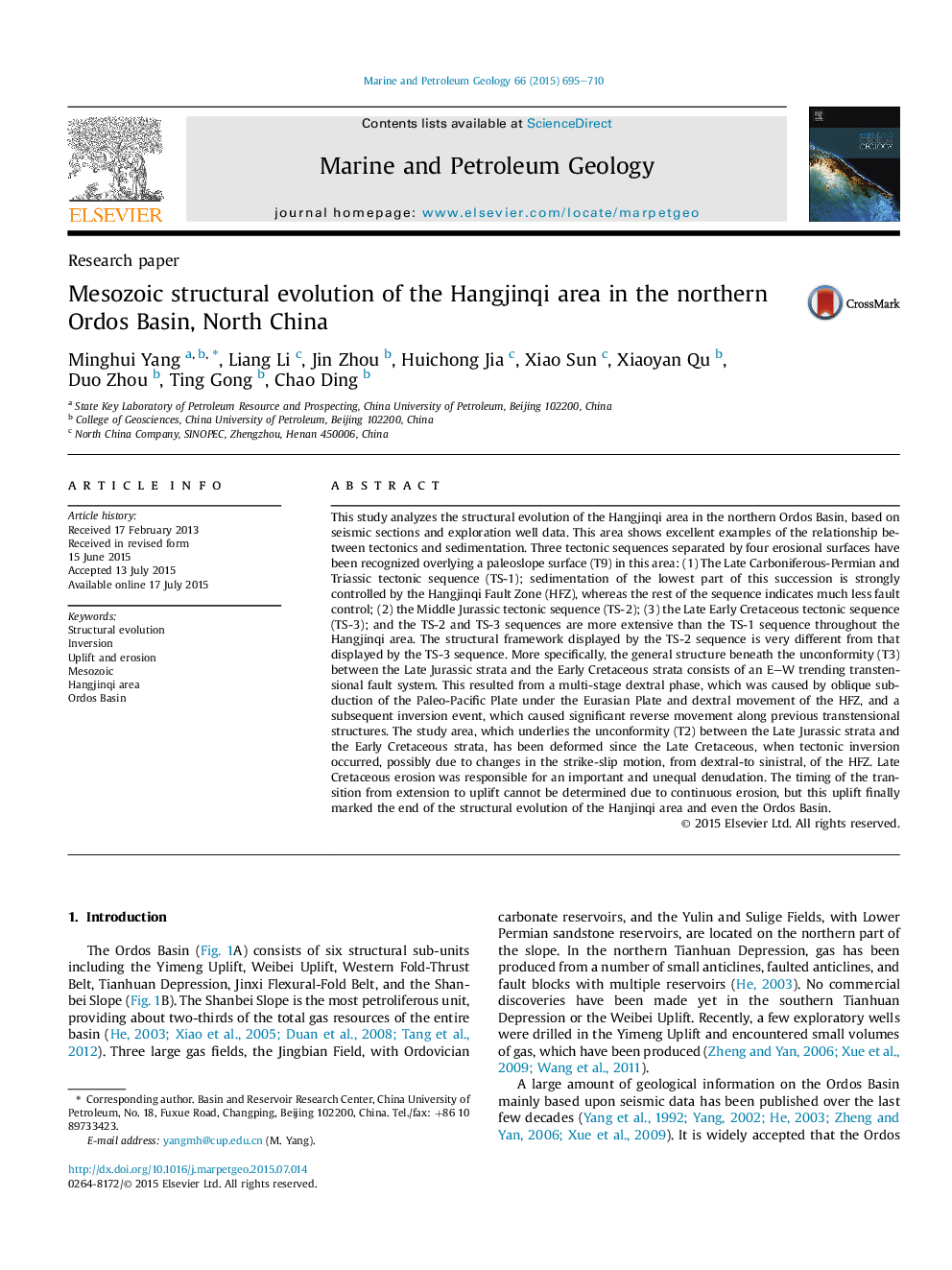| کد مقاله | کد نشریه | سال انتشار | مقاله انگلیسی | نسخه تمام متن |
|---|---|---|---|---|
| 4695485 | 1351610 | 2015 | 16 صفحه PDF | دانلود رایگان |

• Three tectono-sequences separated by four erosional surfaces have been recognized.
• Tectonic inversion occurred due to the changes of the HFZ from dextral to sinistral.
• Late Triassic compression was related to the collision between the NCC and the Yangtze Plate.
• Middle Jurassic transtension was caused by oblique subduction of the paleo-Pacific Plate.
This study analyzes the structural evolution of the Hangjinqi area in the northern Ordos Basin, based on seismic sections and exploration well data. This area shows excellent examples of the relationship between tectonics and sedimentation. Three tectonic sequences separated by four erosional surfaces have been recognized overlying a paleoslope surface (T9) in this area: (1) The Late Carboniferous-Permian and Triassic tectonic sequence (TS-1); sedimentation of the lowest part of this succession is strongly controlled by the Hangjinqi Fault Zone (HFZ), whereas the rest of the sequence indicates much less fault control; (2) the Middle Jurassic tectonic sequence (TS-2); (3) the Late Early Cretaceous tectonic sequence (TS-3); and the TS-2 and TS-3 sequences are more extensive than the TS-1 sequence throughout the Hangjinqi area. The structural framework displayed by the TS-2 sequence is very different from that displayed by the TS-3 sequence. More specifically, the general structure beneath the unconformity (T3) between the Late Jurassic strata and the Early Cretaceous strata consists of an E–W trending transtensional fault system. This resulted from a multi-stage dextral phase, which was caused by oblique subduction of the Paleo-Pacific Plate under the Eurasian Plate and dextral movement of the HFZ, and a subsequent inversion event, which caused significant reverse movement along previous transtensional structures. The study area, which underlies the unconformity (T2) between the Late Jurassic strata and the Early Cretaceous strata, has been deformed since the Late Cretaceous, when tectonic inversion occurred, possibly due to changes in the strike-slip motion, from dextral-to sinistral, of the HFZ. Late Cretaceous erosion was responsible for an important and unequal denudation. The timing of the transition from extension to uplift cannot be determined due to continuous erosion, but this uplift finally marked the end of the structural evolution of the Hanjinqi area and even the Ordos Basin.
Journal: Marine and Petroleum Geology - Volume 66, Part 4, September 2015, Pages 695–710